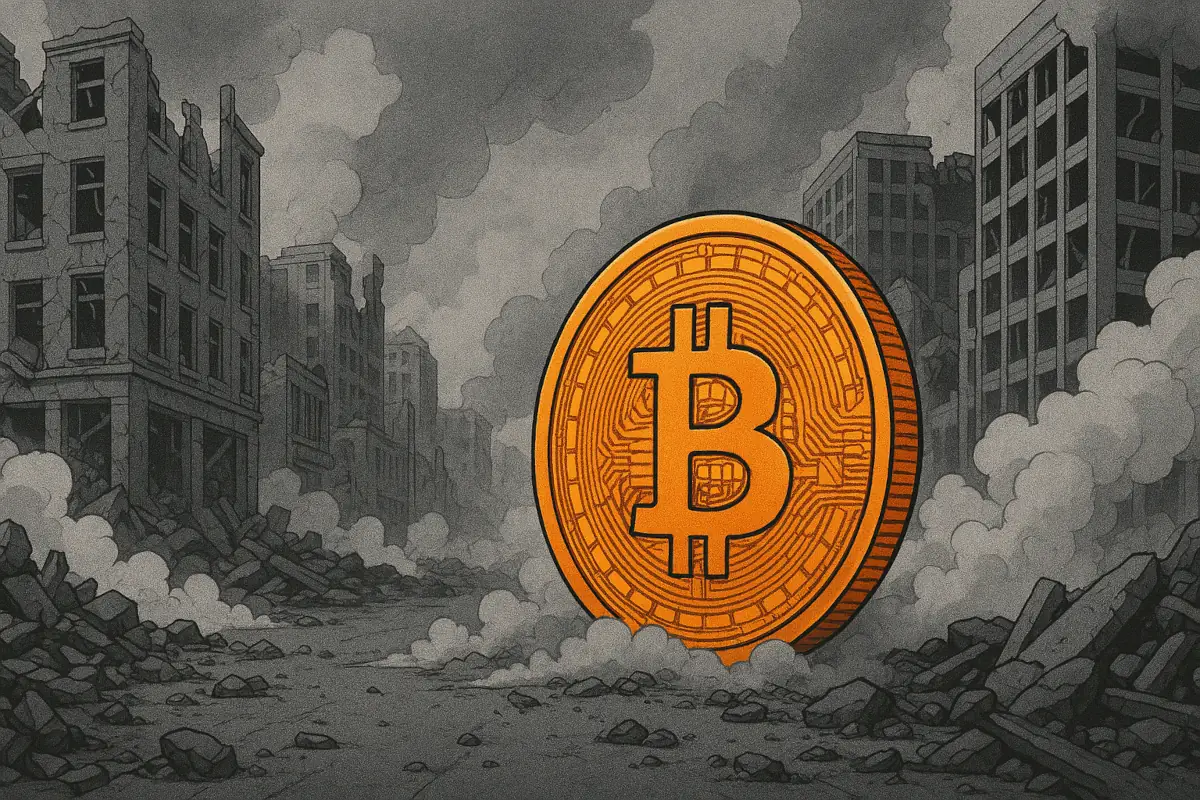It’s been a day of wild swings, fake headlines, and short-lived relief. After a brutal morning that saw Ethereum drop below $1500 and XRP collapse 22%, later hours brought something unexpected: not a full-on collapse, but a shaky, volatile hold.
Crypto markets bounced slightly from morning lows. Bitcoin climbed back to $79,000, Ethereum managed to hold $1550, and XRP – after crashing to $1.65 – pulled off a sharp rebound to $1.91. Solana, which dipped below $100 for the first time in over a year, is now back at $106.
But while prices are slightly higher than they were earlier, the mood hasn’t shifted. What’s happening isn’t just a correction. It’s a sign that the global financial system is entering a dangerous new phase – and crypto, once again, is where the fear plays out first.
Table of Contents
Stocks Panic, Then Settle – Just Barely
The day started with a global rout. Asian markets opened in full collapse mode. Japan’s Nikkei lost over 7%, while China’s Shanghai Composite dropped nearly 8%.
Europe followed with heavy selling – STOXX 600 fell 4.5%, France’s CAC 40 lost 4.8%, Germany’s DAX dropped 4.3%, and the UK’s FTSE 100 slid 4.4%. In Warsaw, the volatility was so extreme that the stock exchange briefly halted trading as U.S. markets opened.
Then came the U.S. – and for a few minutes, it looked like everything would break. Stock futures were down sharply overnight, with the Dow losing 1,000 points at the open. The S&P 500 and Nasdaq both gapped lower, triggering fresh fears of a second straight day of collapse.
But the crash didn’t happen. Instead, stocks spent most of the session whipsawing wildly – first jumping on a rumor of a 90-day tariff pause, then tumbling when the White House called it “fake news”. By the close, the Dow lost 0.9%, the S&P 500 slipped 0.23%, and the Nasdaq managed to close slightly in the green, up 0.1%.
That’s not exactly a bullish turnaround – but compared to the global selloff earlier in the day, it was almost calm. The Stocks Fear and Greed Index, though, stayed firmly in panic territory, with a reading of just 4. That’s about as low as it gets.
Read also: How To Use Crypto Fear and Greed Index To Your Advantage?
The Trade War Isn’t Slowing Down
The recovery in markets was driven more by hope than reality – and that hope didn’t last long.
Trump made it clear on Monday that the tariffs aren’t going anywhere. When asked if he’d pause duties to allow negotiations, he shot the idea down: “We’re not looking at that”, he told ABC’s Mary Bruce. “There will be fair deals – and in certain cases, they’re going to be paying substantial tariffs.”
Then, just as traders were beginning to digest the morning chaos, Trump escalated again. In a Truth Social post, he threatened new 50% tariffs on China, set to take effect on April 9 if Beijing doesn’t reverse its 34% retaliation.
If China does not withdraw its 34% increase above their already long term trading abuses by tomorrow, April 8th, 2025, the United States will impose ADDITIONAL Tariffs on China of 50%, effective April 9th.
The EU is also preparing its response. A first wave of countermeasures will begin April 15, targeting products like bourbon – though that inclusion remains disputed after Trump threatened 200% tariffs on European wine if whiskey stays on the list. A second round is set for May 15, with broader targets like cars and electronics. Member states remain divided on how aggressive to be, but the overall tone is clear: escalation is coming.
False Pause Rumor Rocks Markets
One of the more surreal moments of the day came courtesy of social media. A rumor that Trump was considering a 90-day pause on all tariffs except those on China triggered a brief surge in stock prices. But the source – a misinterpretation of a Fox News interview with Kevin Hassett – quickly fell apart.
The White House called the report “fake news” within minutes, and the original social posts were deleted. But the damage was done. Stocks swung wildly. CNBC read the rumor on air before verifying it. Reuters issued a correction. The episode offered a clear reminder: markets are desperate for relief – and willing to believe almost anything if it hints at de-escalation.
What Comes Next?
Crypto’s partial recovery suggests some stabilization – but it doesn’t mean the storm has passed. Stocks may have avoided another collapse today, but volatility remains extreme, and the trade war is only deepening.
Tariffs are already pushing prices up across sectors – from autos and aluminum to groceries and consumer electronics. Inflation risk is back on the table, and the Federal Reserve may now have even less flexibility to cut rates.
If China or the EU responds with sharper retaliation, or if the U.S. follows through with its threatened 50% tariffs, we could see another wave of panic across global markets.
For now, crypto is holding. But it’s still very much in the crossfire.
Read also: Bitcoin Dominance Climbs to 63%, Highest Since 2021




